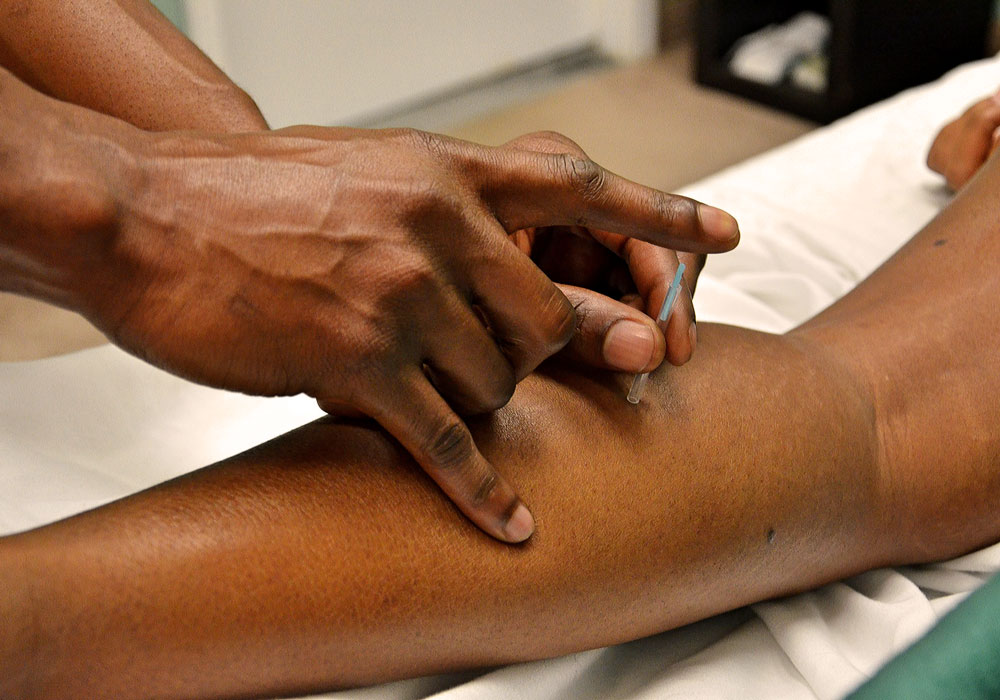Pain is the most common and debilitating side effect that patients with cancer experience. Contributing factors include the disease itself via tumor invasion on surrounding tissue and bone; nerve compression; treatments including chemotherapy, radiotherapy and surgery, especially chemo-induced peripheral neuropathy (CIPN), which can be disabling; and aromatase inhibitors that can cause persistent diffuse joint pain. In addition, pain that “breaks through” continuous pain medicine can be difficult to predict and control.
Conventional strategies for managing pain include nonsteroidal anti-inflammatory drugs, acetaminophen, and opioids. But those pharmaceuticals are associated with adverse effects, and prolonged use can lead to addiction or tolerance. In response, patients and providers have sought nonpharmacologic interventions. Hospitals are now required to include such options in the overall pain management plan. Acupuncture is one such strategy that has been shown to produce pain relief with minimal risk of adverse effects. An integral component of traditional Chinese medicine, it involves stimulating predetermined acupoints on the body with needles for therapeutic benefits.
What Does the Evidence Say?
A Cochrane review of five randomized trials and 285 patients found benefits of acupuncture for pain relief when compared to pain medication, although limitations include small sample size and poor methodology.
Acupuncture has also been specifically evaluated for aromatase inhibitor–associated arthralgia (AIAA) and musculoskeletal symptoms, with positive findings. Noteworthy is a three-arm trial of 67 postmenopausal patients with breast cancer and AIAA in which 10 electro-acupuncture treatments over 8 weeks resulted in durable, clinically relevant reductions in pain (p = 0.0004 and p < 0.0001, measured at 8 and 12 weeks). Also, in a large study involving 226 postmenopausal women with early-stage breast cancer with AIAA, acupuncture treatments resulted in statistically significant reductions in join pain when compared with sham acupuncture or with waitlist control.
But effectiveness data of acupuncture for CIPN are mixed. In a study of 98 multiple myeloma patients, manual acupuncture combined with methylcobalamin was significantly better than methylcobalamin alone in reducing pain scores. And a recent, single-arm trial reported safety and effectiveness of acupuncture in decreasing the incidence of high-grade CIPN in patients with breast cancer receiving chemotherapy. However, a study of 60 patients with cancer randomized to receive electroacupuncture, electroacupuncture with hydroelectric baths, high-dose vitamin B1/B6, or placebo did not find any significant difference in improvements. Additional research is needed.
Although the mechanisms via which acupuncture exerts its effects are complex, functional magnetic resonance imaging and positron-emission tomography revealed that both manual and electrical stimulation with acupuncture needles can modulate the activity and connectivity of higher brain structures in humans, especially the insula and limbic areas that are known to play a role in affective responses and pain modulation, along with somatosensory areas.
What Oncology Nurses Need to Know
Growing evidence supports the use of acupuncture for alleviating cancer pain, and it is being offered at many cancer hospitals in the country. More importantly, patient preference rates for acupuncture versus conventional pain medications were recently reported to be comparable. This evidence should be incorporated into clinical practice guidelines related to cancer pain by leading cancer-focused organizations, such as the National Comprehensive Cancer Network (NCCN) guidelines and Multinational Association of Supportive Care in Cancer guidelines.
Interestingly, only the NCCN Guidelines on Acute Cancer Pain recommend acupuncture as an integrative treatment for cancer pain. ONS’s Putting Evidence Into Practice guidelines have classified acupuncture as “effectiveness not yet established” (see sidebar).
This is a unique time in health care, where institutions are struggling to balance patient experience with society’s opioid epidemic, making providers cautious prescribers. Acupuncture offers an integrative treatment option for various types of cancer pain with minimal side effects when compared to narcotic administration. Oncology nurses should consider incorporating acupuncture into clinical care for patients with pain.
Acupuncture treatments are safe when performed by qualified practitioners. Minor side effects reported include bleeding, hematoma, pain, and dizziness; adverse events such as pneumothorax and local infections are extremely rare. Patients with cancer should seek credentialed practitioners who have experience working with this population.






